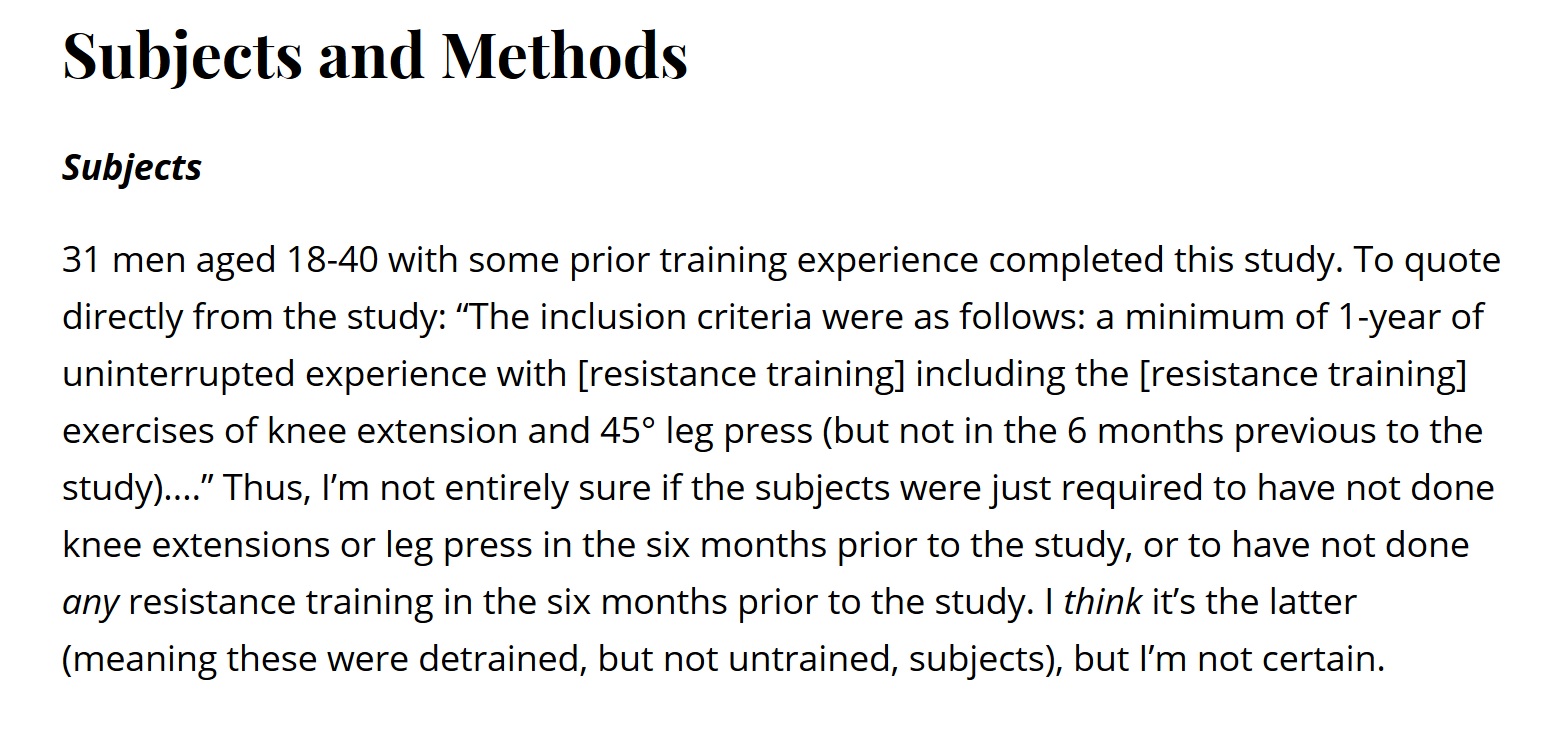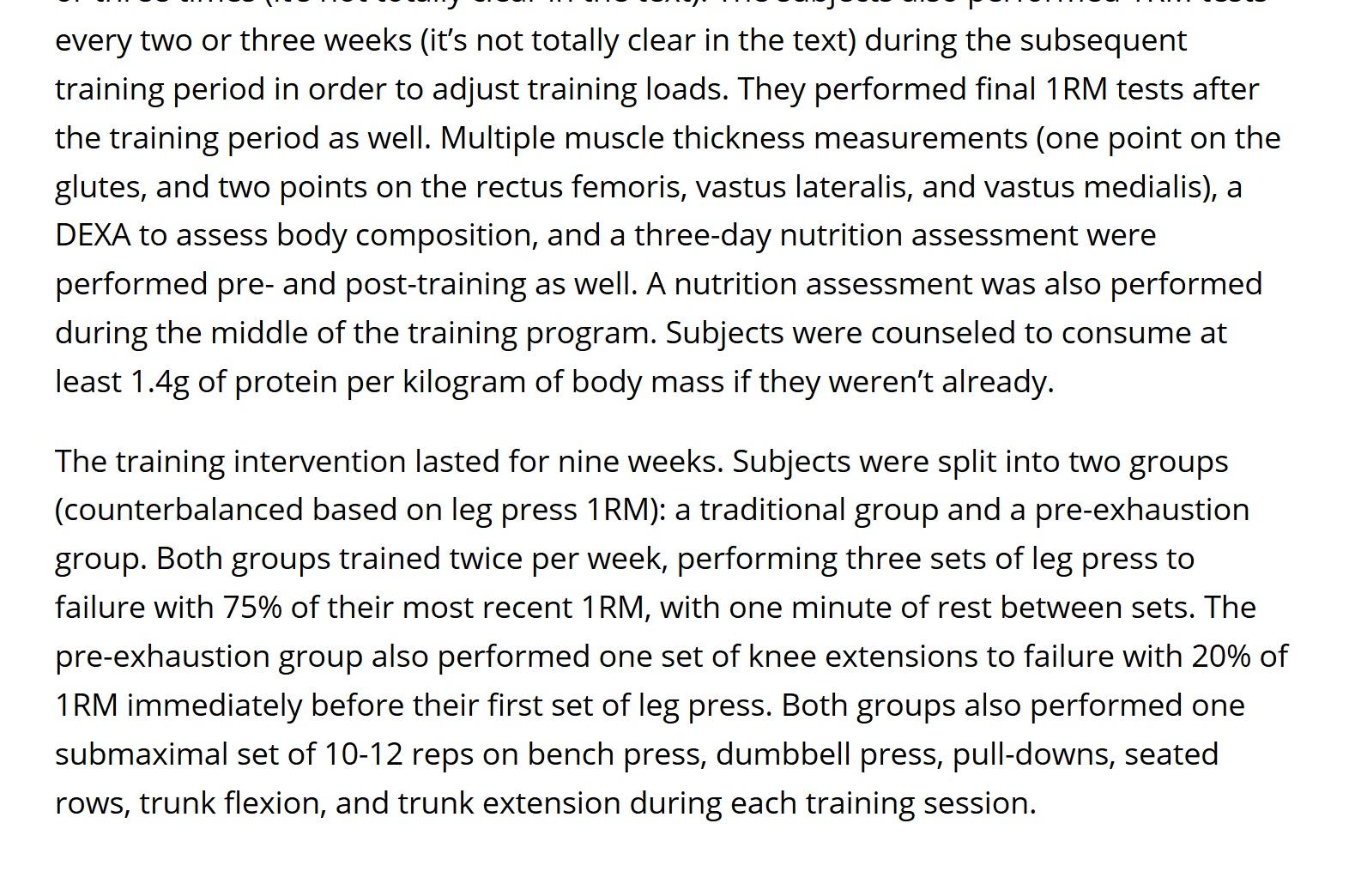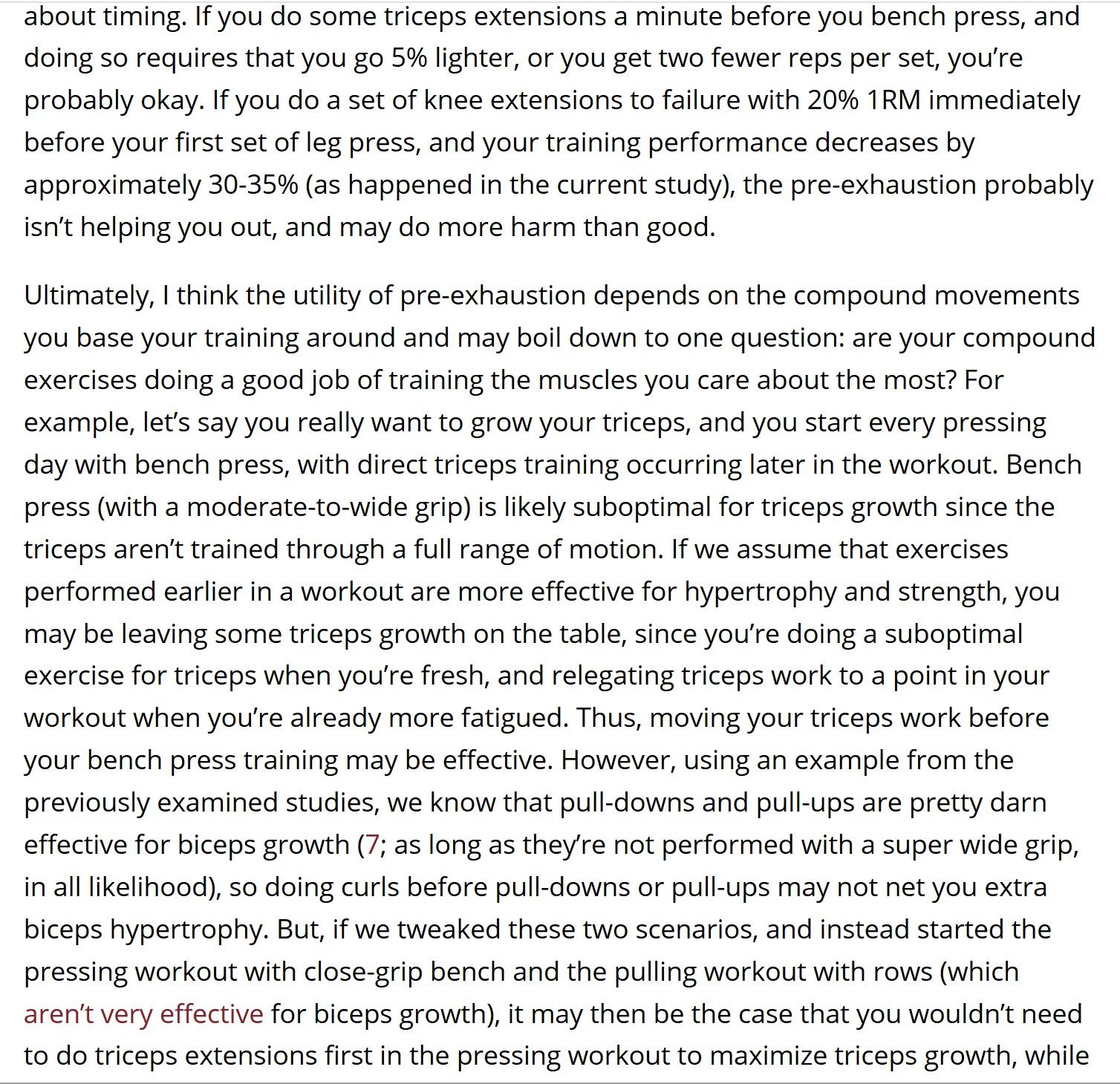Do Leg Extensions BEFORE Leg Press!
Build More Muscle!
If you’re anything like me, you’re always looking for new techniques to incorporate into your training to try to gain that extra edge. Even if it’s just the SLIGHTEST increase in muscle mass, barely noticeable to anyone but yourself. When you’re a natural athlete… every centimeter of muscle gain counts. By now you’ve probably heard about “pre-exhaustion” training and if you haven’t, let me explain what it is.
Pre-Exhaustion Training: What Is It?
Pre-exhaustion training is an “advanced” technique for hypertrophy training that involves training a specific muscle group with a single-joint movement prior to engaging it yet again with a multi-joint movement.
A good example of this would be when trying to increase the amount of quad focus on your SQUATS, you would first start off by performing a set of LEG EXTENIONS with light weight until failure. Then you after a short rest of about one minute, you would start your working sets of barbell squats with the idea being that because your quads are “pre-exhausted”, they now have to work harder to move the same working weight making your reps more effective at targeting your quads for muscle growth.
Well, that’s at least the “CLAIMS” behind pre-exhaustion training. But the thought process behind it seems to make a lot of sense, right? I guarantee if you tried this right now your quads would light up like a Christmas tree during your first set of barbell squats. But does “feeling” your quads more mean they’re growing?
I know that even for a lot of my own clients that their performance in a compound movement may be LIMITED by muscle groups OTHER THAN the one we’re trying to target. Another great example which I think is more relatable to you guys than quads would be CHEST. I get DMs all the time from people saying things like: “How come my arms give out before my chest does?”, or “Why do I always feel my shoulders and triceps instead of my chest when benching?”
Now form issues aside, the working theory here is that your triceps and delts are most likely too eager to help out during the bench press and thus are performing most of the work during your reps. Or more accurately, they’re “stealing” all the work from your chest. So maybe if we can fatigue your chest muscles prior to benching with an isolation exercise such as the dumbbell or cable fly, then theoretically your now “pre-exhausted” chest muscles should be guaranteed to be the “limiter” during the bench press allowing you to now achieve maximum stimulation of the chest for more muscle growth. Well, that’s the theory behind the technique, but does it actually work?
What Does The Science Say?
Let’s take a look at this study from massmember.com For the study they took 31 fit and well-trained men between the ages of 18 and 40, which is actually a very good sample size, and divided them into two groups. One group trained utilizing the pre-exhaustion technique and the other trained without it. We’ll call these the “traditional group” and the “pre-exhaustion” group.
It should also be noted that in order to participate in the study each man needed “a minimum of 1-year of uninterrupted experience with [resistance training] including the exercises of knee extension and 45° leg press (but not in the 6 months previous to the study).” This is great because it means that basically everyone was de-trained for these two movements and everyone was starting fresh.

So the way the experiment worked was that the “traditional group”, or the group NOT utilizing the pre-exhaustion method, performed THREE sets of leg press to failure with 75% of their 1RM. They then rested one minute between sets and they trained TWICE a week for 9 weeks.
Now, the pre-exhaustion group did the exact same thing, except they performed ONE set of knee extensions to failure with 20% of their 1RM immediately before their first set of leg press. So to be clear, they had ZERO REST between their leg extensions and first set of the leg press.

Now what did the research find? Well, disappointingly but not entirely unexpected, there were no significant differences between training groups as far as strength or hypertrophy is concerned after the 9 weeks. In fact, the only notable difference was that the pre-exhaustion group got somewhat stronger in the leg extension, which to be honest makes sense since both groups were de-trained in leg extensions and the leg press for 6 months prior to completing the study.

So Is “Pre-Exhaustion” Training Worthless?
Well, that’s a good question and I would like to offer my own opinion here based on my own experience working with my clients. I don’t think that anything you do in the gym is worthless. Well, maybe not “anything”, but you get what I mean. As long as the theory has some base in science, depending on the context and your programming, it could help you with your goals.
For example, in this study (Study 1) it was shown that triceps thickness DID increased over a period of 12 weeks when a single-joint exercise was performed before a multi-joint movement. So what’s up with the conflicting data? Well, to be 100% certain, as the author of the study Greg Nucklos says, we would need to dig into the topic more. But he did offer an interesting explanation. Nucklos goes on to say that…
“the utility of pre-exhaustion depends on the compound movements you base your training around and may boil down to one question: are your compound exercises doing a good job of training the muscles you care about the most? For example, let’s say you really want to grow your triceps, and you start every pressing day with bench press, with direct triceps training occurring later in the workout. Bench press (with a moderate-to-wide grip) is likely suboptimal for triceps growth since the triceps aren’t trained through a full range of motion. If we assume that exercises performed earlier in a workout are more effective for hypertrophy and strength, you may be leaving some triceps growth on the table, since you’re doing a suboptimal exercise for triceps when you’re fresh, and relegating triceps work to a point in your workout when you’re already more fatigued. Thus, moving your triceps work before your bench press training may be effective.”

So it seems like this “pre-exhaustion” technique really boils down to specific exercises as not all exercises are created equal in terms of how much activation we receive from both the primary and secondary movers. But based on all the data, for the most part, AT BEST, you’ll be getting the SAME gains compared to conventional training in terms of muscle growth and if you have a lagging area or a specific muscle group you want to focus on growing, don’t save it until the end of your workout when you’re already exhausted.
Additional Thoughts
But I do want to leave you with one more thing to ponder. We’ve talked a lot about Mind-Muscle Connection (MMC) here and that how a lot of times if you’re not seeing growth, or “feeling the pump” when training it could be due to having a POOR mind-muscle connection.
Let’s revisit the barbell chest press for a moment so I can explain. Maybe for someone who is a bit more advanced with their training, performing a set until failure of chest flys doesn’t offer any sort of benefit. In fact, it might actually do more harm than good because your first set of your barbell bench press may be affected in that you’ll either get LESS reps than normal, or you’ll have to lower your working weight, or both.
But if you’re new to training and are still having a hard time activating your chest during your reps because your arms and shoulders take over during the movement, a quick set of chest flys could be the key to helping you improve your MMC. But if you were to utilize this as a technique for MMC improvement, then instead of performing a set until failure and then IMMEDIATLEY rushing to the bench press, I would perform 1 or 2 sets of 15 – 20 reps with light weight, focusing on a deep stretch and hard flex on every rep, and then rest a good 60 – 90 seconds before starting your barbell bench press.
Conclusion
At the end of the day, it’s definitely OK to experiment with new training techniques, but ALWAYS remember that the basics work. That’s why they have been around for SO LONG and if you need a new workout program to get you back on track you can download my program Guaranteed Gains HERE!
References:
Mass Study - https://www.massmember.com/products/mass-subscription/categories/2052647/posts/6912064
Study 1 - https://www.ncbi.nlm.nih.gov/pmc/articles/PMC3737971/
https://www.ncbi.nlm.nih.gov/pubmed/25753776






